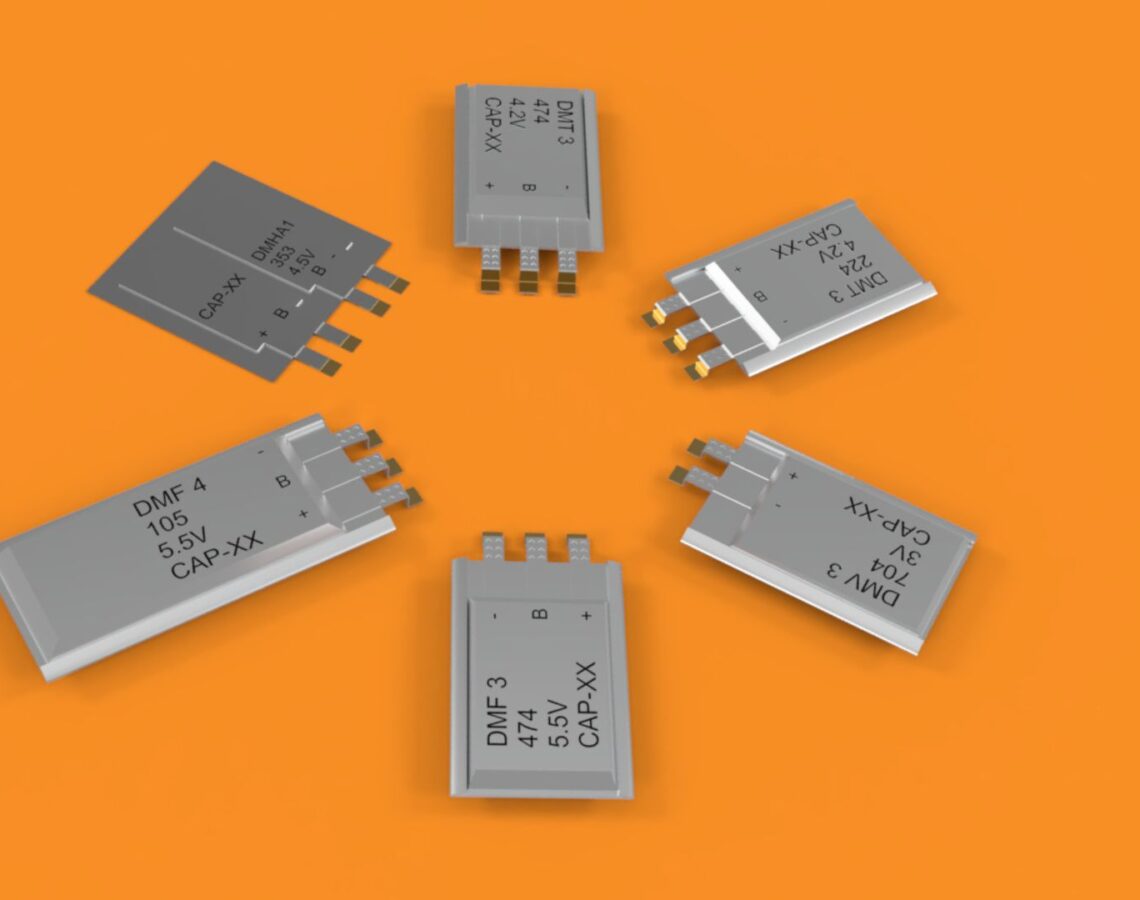Five common misconceptions about supercapacitors

In the pursuit of improved energy storage solutions, supercapacitors have emerged as a superior alternative to the current most common option of batteries. Supercapacitors promise to revolutionize how we harness and redistribute energy by offering faster charging and discharging times, a longer life span and sustainable disposal options.
Yet, amidst the excitement surrounding these high-performance devices, a cloud of misconceptions often shrouds their true capabilities.
Let’s delve into the core of supercapacitor technology and debunk five common myths about this remarkable energy storage solution.
-
Supercapacitors are just more powerful capacitors.
Though capacitors and supercapacitors are closely related in that they offer a high-power alternative energy storage solution, some crucial differences exist beyond supercapacitors being simply more powerful.
Capacitors store energy by accumulating electric charge on the surface of two conductive plates separated by an insulating material. The amount of stored energy is proportional to the voltage applied and the capacitance of the capacitor.On the other hand, supercapacitors store energy differently using two methods: electrostatic double-layer capacitance and pseudocapacitance. Electrostatic double-layer capacitance involves separating charges at the interface between an electrode and an electrolyte, while pseudocapacitance uses reversible chemical reactions at the same interface.
This difference means capacitors have a high power density but a lower total energy storage capacity, making them more suitable for releasing bursts of energy and a great choice for consumer electronics. Meanwhile, supercapacitors’ higher total energy storage capacity and rapid charge and discharge cycles make them ideal for many industries and applications, such as medical devices and automotive functionality.
-
Supercapacitors can replace batteries in all applications.
Supercapacitors can certainly stand alone and replace the need for a battery in scenarios where short bursts of current are the primary requirement. However, they cannot replace batteries entirely.
This is because they don’t have the high energy density found in batteries needed when energy is required for extended periods. Supercapacitors can be used alongside batteries to deliver optimal performance in these instances. This is often the case in electric vehicles, for example.
-
Supercapacitors have an unlimited life cycle.
A supercapacitor’s life cycle depends on several factors, mainly whether it is used at a high or low voltage and temperature dissipation. When a low voltage is applied with a lower temperature dissipation, the life cycle hours are substantially higher.
While supercapacitors boast an impressive life cycle much higher than that of a battery, it is not unlimited. Generally, a supercapacitor can be charged and discharged millions of times without significantly losing capacity or performance. However, there is a limit to its lifespan, which is reached when the capacitance drops to 70% of its original value, or the internal resistance has doubled – whichever comes first.
-
Supercapacitors are too big to charge between load pulses.
Supercapacitors act as the ‘middleman’ between a power source and a device, averaging the load as seen by the source and the source voltage as seen by the load.However, there is a misconception that a supercapacitor is too large to charge between pulses. In reality, a bigger supercapacitor gets less drained during each burst, requiring less time to recharge before the next one. Liken it to a filter that helps maintain a steady flow of energy – the larger the supercapacitor, the better it averages out the ups and downs.
-
Supercapacitors require lots of room for design.
Though this might be true with certain products, we offer the world’s thinnest supercapacitor, which, as you can imagine, takes up very little space on or around the circuit board.
Our ultra-thin prismatic supercapacitors, such as the DMH supercapacitor, which is only 0.4mm thick, allow for flexibility far beyond the capabilities of other rigid and bulky supercapacitors. This means it can be used in mechanical arrangements and wiring infrastructure where space is more limited.
Explore our full range of supercapacitors, from the prismatic to the coin cell, specifically shaped and designed for automotive, consumer, medical and industrial applications.
Our products provide the highest energy density on the market while improving devices’ run-time and battery life, particularly at cold temperatures.
Bridge the gap in power supply between batteries and capacitors with CAP-XX.

